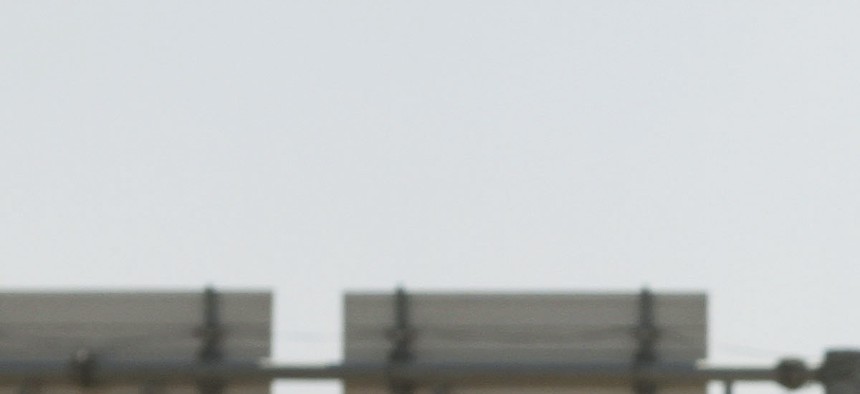
Shiite militiamen, on August 31, 2014, patrol in Amerli, Iraq, after breaking a siege by the Islamic State on the town. AP Photo
‘No Boots on the Ground’ Doesn’t Mean No Combat in Iraq
President Obama is vowing not to send 'boots on the ground' in Iraq but they’re already there. By Gayle Tzemach Lemmon
President Barack Obama is due to address the nation in prime time on Wednesday to lay out his plan to fight the Islamic State. He already has made a “no boots on the ground” pledge that he will not return the U.S. to war in Iraq. The five-word phrase has become a frequent vow against upping the combat ante in Iraq.
“The notion that the United States should be putting boots on the ground, I think would be a profound mistake," Obama said in an interview on NBC’s "Meet the Press" on Sunday. "I want to be very clear and very explicit about that."
White House spokesman Josh Earnest on Monday also said that the president who was elected to end wars, not start them, “is not contemplating the deployment of combat boots on the ground into Iraq or Syria to deal with this situation. Last Friday at a NATO Summit meeting about the Islamic State in Wales, Secretary of State John Kerry called “no boots on the ground” a “red line for everybody here.”
Yet the number of American boots on the ground in Iraq is growing and could grow significantly after Obama’s speech. While their boots may not be engaged in traditional combat, even a new unit of troops labeled as “advisors” would hope to go out with their Iraqi and Kurdish counterparts closer to the fight.
In Baghdad, there is no question U.S. personnel are surrounded by a nasty conflict that is only destined to grow more lethal in coming days and months – and already threatens American personnel much closer to their safe quarters than the fighting in northern Iraq which is commanding attention in Washington.

Just days before Obama authorized the Pentagon to deploy an additional 350 troops to protect the U.S. Embassy in Baghdad last month, sniper fire hit the facility, several sources in Iraq told Defense One.
The incident underscores the nature of the threats on the ground in Baghdad.
Security is said to have been upped in the wake of the Aug. 31 shooting, including having sandbags stacked higher for greater protection from sniper fire, a source said.
"We don’t generally discuss the details of specific security incidents at our facilities in Iraq due to obvious security concerns,” a U.S. Embassy spokesman said, “but I can report that there have been no serious injuries at Embassy Baghdad due to a gunshot or any other reason in recent days. I can also report that the Embassy has continued to operate normally and without interruption.”
On Sept. 2, Obama approved 350 more U.S. military personnel “to protect our diplomatic facilities and personnel in Baghdad, Iraq.” The White House said these “additional forces will not serve in a combat role” before noting that “in addition to our efforts to protect our personnel, we will continue to support the Government of Iraq's efforts to counter ISIL, which poses a threat not only to Iraq, but to the broader Middle East and U.S. personnel and interests in the region.”
The White House said last Tuesday that the decision to further boost the number of U.S. forces on Iraqi soil came “at the recommendation of the Department of Defense after an extensive interagency review,” and a Pentagon official says no one incident was responsible for the move.

“The additional 350 security troops were not sent in response to a specific threat but in response to overall threat environment across Iraq,” Pentagon spokesman Col. Steve Warren told Defense One.
The White House’s decision to send the 350 additional troops to Iraq to enhance diplomatic security brings to more than 1,000 the number of U.S. military in country to combat the threat posed by Islamic State fighters.
Obama decided to begin launching air strikes against Islamic State targets in Iraq this summer, facing a growing threat and a strengthening force. U.S. Central Command has led more than 150 airstrikes. And while the administration has made clear from the start that combat troops were not an option, officials have varied on just how lethal a threat the group poses, and to whom. Descriptions have ranged from “manageable” to “existential.”
The American public’s concern about the threat is more fixed. “Seven in 10 Americans believe ISIS has the resources to launch an attack against the United States,” according to a recent CNN poll. Yet while the poll shows three-quarters of those surveyed favor more air strikes and military aid to local forces fighting the Islamic State, 61 percent oppose sending American forces to fight the terrorist front on the ground.
Come Wednesday night, the president must find a common thread to bind to his strategy – whatever it may be – an American public both fearful of the rise of the Islamic State and the fall of Iraq, and exhausted by war.




